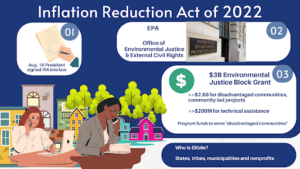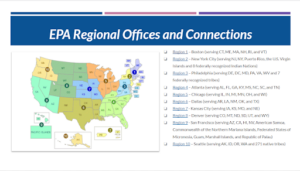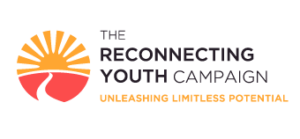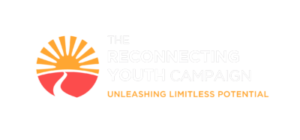Opportunity Youth Advocacy Community – October 2022 Monthly Meeting Summary
Updates from a national coalition of individuals and organizations who come together to build comprehensive support for and investment in pathways for Opportunity Youth – young people ages 16 to 24 who are not in school or the workforce.
If you’re interested in joining this cross-issue coalition of advocates and researchers focused on Opportunity Youth, please sign up here. Advocates of all ages and issue areas are welcome!
- DC state of play
- Implementation discussion
- Resource Round-Up
DC state of play
FY23 Appropriations
Every year, the federal government must set spending levels for federally funded programs and systems, called appropriations. Last month, Congress passed a stopgap spending bill, known as a Continuing Resolution (“CR”), that funds the government through December 16, 2022. In the Senate, the bill passed 72-25 (three abstentions) and 232-193 in the House.
Once members of Congress come back after the midterm elections, they have a tight window to get fiscal year (FY) 2023 appropriations done this year. House democratic leadership has signaled that an omnibus package will pass by the end of this year.
We’ll keep you posted in future stakeholder briefings and these recap blogs, or follow us on Twitter to stay up-to-date on our appropriations advocacy!
Tapping New Funds for Older Youth In this month’s Opportunity Youth Stakeholder conversation, we focused on the implementation of recent federal laws and tapping recently passed federal funds — specifically, the Inflation Reduction Act (IRA), Bipartisan Safer Communities Act, Bipartisan Infrastructure Law, and the American Rescue Plan Act (ARPA) — to support older youth.
Keep reading for more details on each of these laws, or check out the following quicklinks to learn more:
- Guide to Leveraging Recent Legislation to Support Older Youth: This guide offers insight to the opportunities presented by the Bipartisan Safer Communities Act (BSCA) and the Inflation Reduction Act of 2022 (IRA), including an overview of available funds.
- Moving the Money: American Rescue Plan Act (ARPA) Local Action Tools: This microsite offers resources on leveraging ARPA to support older youth, especially Opportunity Youth, including a webinar, video explainers, examples of states and municipalities using funds to support older youth, and more.
- Inflation Reduction Act and the Environmental and Climate Justice Block Grant

As we mentioned in our September Monthly Meeting Summary, the Inflation Reduction Act (IRA) passed this summer, a large-scale economic investment addressing issues such as prescription coverage and climate justice – including a $3 billion Environmental Justice Block Grant. According to at least one analysis, the IRA could lead to the creation of 9 million jobs – an exciting opportunity for the Opportunity Youth field to think about the priorities we want to lift up, such as youth engagement and youth employment.
The Environmental Protection Agency (EPA) is the implementing agency for the climate related provisions of the IRA, and there is a new programmatic office within the EPA to support the implementation: the “Office of Environmental Justice and External Civil Rights.” The office will work to help ensure that stakeholders are engaged in the process so that implemented funds meet the needs of communities and directly impacted individuals throughout the country.
The $3 billion Environmental Justice Block Grant will be broken down into $2.8 billion to benefit disadvantaged communities through community led projects, and $200 million for technical assistance. Organizations eligible for this block grant will include states, tribes, municipalities, and nonprofits. Right now, the EPA is still in planning and listening mode, so the grants are not open for applications yet, but you can sign-up here to be notified when they are and follow their Twitter account for updates.
In the meantime, the Office of Environmental Justice and External Civil Rights (OEJECR) is focused on a couple key priorities as they’re structuring their office to prepare for the implementation of these grants. These priorities include:
- Increasing staffing for environmental justice in all regions. This means that there will be more opportunities for engagement with their regional staff and more partners for conversations in local areas. Regional plans are currently in the process of being developed.
- Sharing more information about grants throughout the EPA. We anticipate this additional information will be shared over the next months and through next year, especially about the $3 billion Environmental Justice Block Grant. We’ve also heard that there will be regional staff on the frontlines who will be able to support applicants with navigating some of the barriers that traditionally come with the process of applying for federal grants. The OEJECR office is eager to learn and hear from directly impacted individuals, community based organizations, and communities.

The graphic above displays the makeup of the regional offices through the EPA.
- Bipartisan Safer Communities Act
The Bipartisan Safer Communities Act (BSCA) was signed into law on June 25, 2022, and is focused on reauthorizing, funding, and supporting programs, grants, and activities that:
- Promote access to behavioral and mental health services
- Enhance school safety and security initiatives
- Address gun violence in communities.
The BSCA includes both formula and competitive grants. Funds are already being distributed, with more rolling out over multiple fiscal years. The agencies to watch for funding opportunities related to the BSCA are:
- Substance Abuse and Mental Health Administration (SAMHSA)
- Department of Education (ED)
- Department of Justice (DOJ)
👉 To learn more about the specific grants available, and links to apply, check out our Guide to Leveraging Recent Legislation to Support Older Youth.
- American Rescue Plan Act – Update
The American Rescue Plan Act (ARPA) is a once-in-a-generation funding opportunity for our communities. Although funds are already being distributed, there may still be windows to direct funds in your community towards older youth because of the multi-year funding structure.
👉 For more information, check out this dedicated microsite about ARPA, including a webinar focused on tapping ARPA funds for older youth, examples of how states and municipalities are ensuring young people are included, and additional resources.
Take Action: Shape the Environmental Justice Scorecard
The Justice40 initiative (J40) is a tangible way that we can shape the direction of some of the funding opportunities discussed above. J40 was created when President Biden signed Executive Order 14008, which required federal agencies to look at existing programs and new funding that comes through to drive at least 40% of funding towards “disadvantaged communities” (for example, the EPA’s initial list includes 72 programs)
Executive Order 14008 also directed the Council on Environmental Quality (CEQ) to develop a scorecard for the agencies to measure their progress. They are currently looking for input on the scorecard through November 3rd! This an important opportunity to ensure the Biden Administration lives up to its promises of advancing environmental justice and civil rights, as this scorecard is what the agencies will use to measure their progress.
👉Here’s how you can take action:
- Check out this Guide to Environmental Justice Scorecard Feedback (includes instructions, suggested language, and link to CEQ’s Request for Information)
- Although this includes suggested language as a starting point, your comment should be specific to you and your organization: It should reflect your own opinions and what’s important to your program or geographical area. It’s also important to customize because if many comments are identical, they may be given less weight by agency staff.
- Leave a comment here by November 3, 2022
Resource Round-Up
- Harvard EELP IRA provisions
- Forum for Youth Investment’s Guide to BSCA and IRA for Older Youth
Children’s Funding Project’s ARPA resources - Brookings ARPA tracker
- Coalition ARPA+ microsite
- Environmental Justice Scorecard comment template: Environmental Justice Scorecard Feedback: Weigh In
- Youth in Gov
- RYC action letter
Join the next meeting!
Please complete our feedback form. It will help us shape the next conversation.
Next conversation is Nov 27, 2022, same time and place (Register for future monthly stakeholder updates)
Stay in touch!
Jo Ann Paanio: joann@forumfyi.org
Kathy Tran: ktran@clasp.org
Thomas Showalter: thomas.showalter@nyec.org






